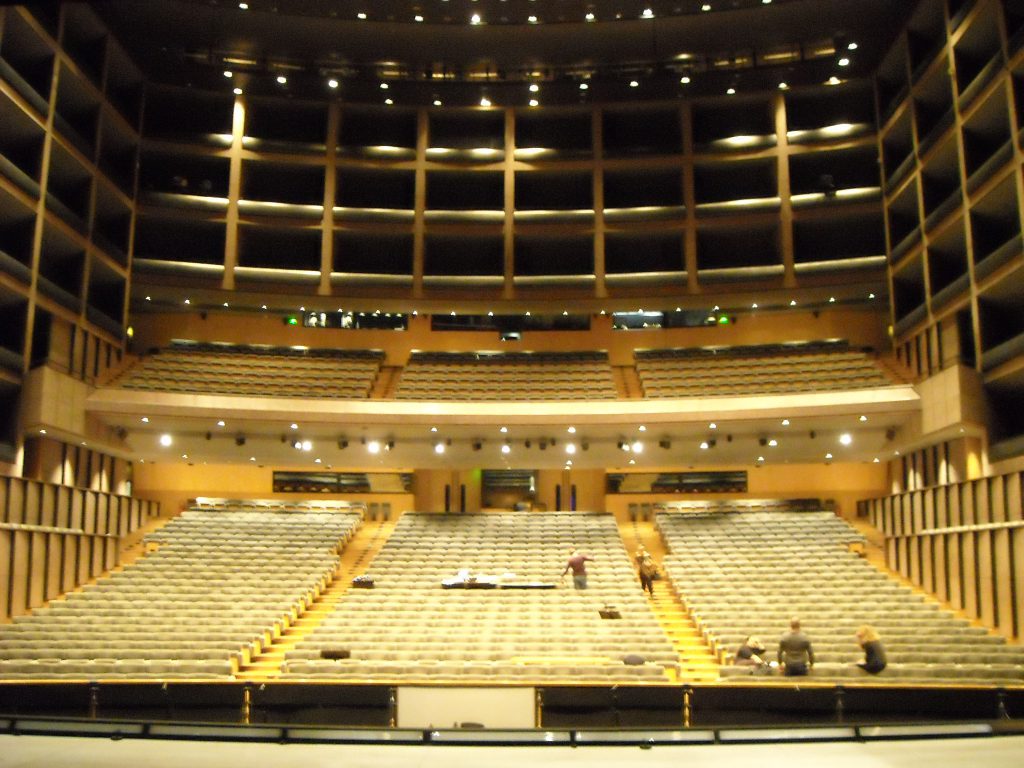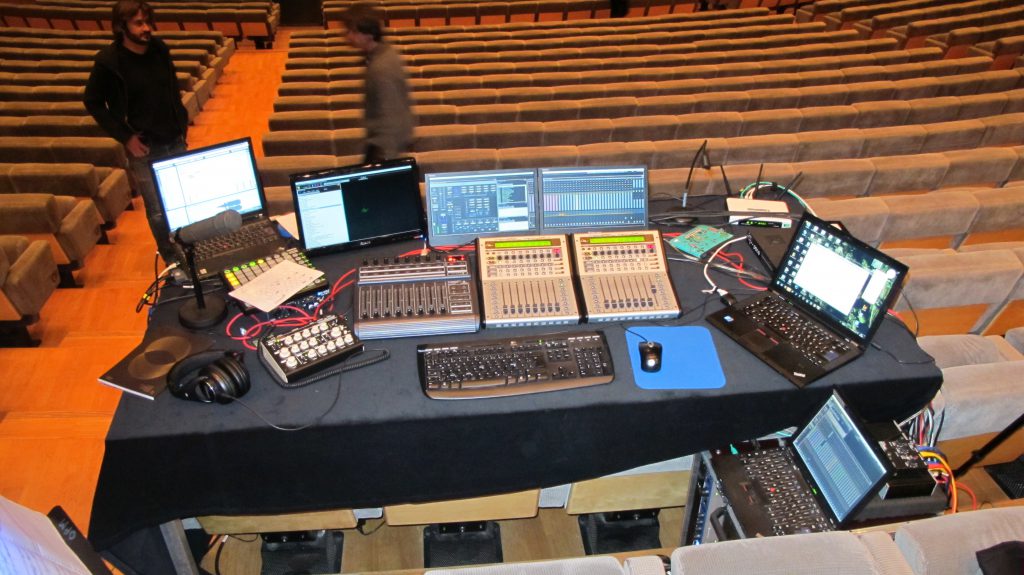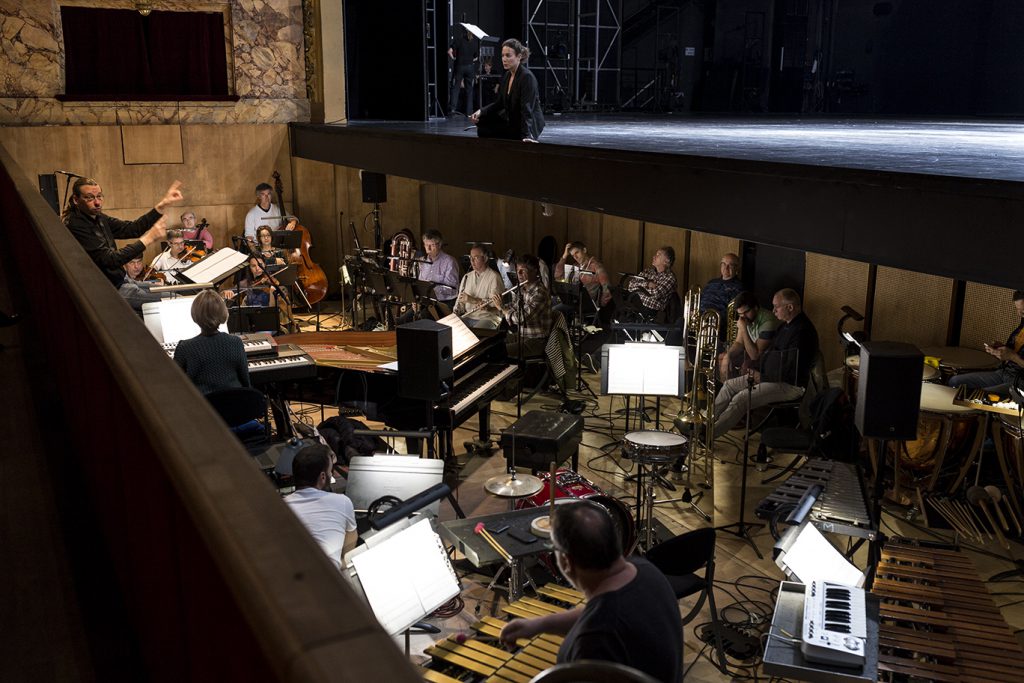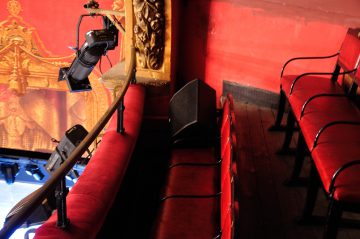In my operas JETZT and HAPPY HAPPY I composed myself into the opera as a sound director, following a few basic thoughts on the subject of classical singing: This technique comes from a time in which great distances could not be bridged acoustically any other way. Today, however, we are surrounded by the sound of closely microphoned voices. It is sung quietly and intimately, the microphone catches every smallest detail. Understandably, we fell in love with this erotic closeness to the singer. When you compose an opera, you have to find an attitude to it, because from this close-miked perspective, the opera singing seems strange at first.
For me it is interesting to work with changing acoustic perspectives, and also with a certain blur. Effects allow alienations and distractions, which make the sensation of classical acoustic singing clearer and more pointed. Therefore it was clear to me from the beginning that I would work with electroacoustic amplification and live electronics.


For my opera JETZT I installed an extensive surround sound system in 3 dimensions (left/right, front/rear, top/bottom), which allowed me an especially immersive sound work. A few concrete examples:
In the prologue I amplified the a-capella Alto voice and at the same time alienated it with effects. The sound was reproduced by loudspeakers in the auditorium, so that the audience dives into the sound of the voice and is not confronted with a singing person on stage. Live effects allowed the singing to accumulate. Actual vocal sounds are used as a sound source and then processed with various live effects. Over time, the live effects overtake and produce the sound themselves. At the end of the prologue, the audience sits in a “cathedral of sound”.

I added a trio of improvising musicians to the orchestra. “Free radicals”, which roughen the smooth surface of the orchestra and which, due to the created blur, should allow a new view of the orchestra. In fact, the three musicians, all of whom have been musical companions for many years, have relatively few notes. Most of this happens on acclamation and from the musicians’ own musical impulse. These were always amplified and often provided with effects.
In another scene, all 5 singers took a megaphone and switched it on only for tiny periods of time while singing very long notes. These impulses lead to a new melody. The idea comes from a piece by Yannis Kyriakides and I developed it further in another scene: Flute, oboe, clarinet, basson, cello, double bass and both hands of the bandoneon are microphoned close and are fed to a mixer, whose mute switch is controlled via midi from the pianist. The eight middle white keys switch these microphones on. The signals are passed on to the speakers around the audience. Switching these long notes creates new melodies.

Designed as an electro-acoustic hybrid, the reinforcement of HAPPY HAPPY plays a decisive role: the orchestration is deliberately imbalanced. Eight solo strings have to hold their own against seven brass players, solo woodwinds, three percussionists as well as samplers and synthesizers. In order to achieve maximum transparency and even sound distribution across all balconies of the Rococo theatre, I decided on an array of five elements from the KS Audio C Line flown as a centre cluster.

The soloist Karen Vourc’h wore a dpa headset microphone and used a handheld transmitter while the strings were picked up with the dpa 4099 microphones. The low bass of the synthesizers and samplers was taken over by two flown C W18 18″ subwoofers. I was very impressed by the round and very low frequency response of these loudspeakers. It was impressive how we could create a really big sound with this comparatively small orchestra of 23 musicians. The low bass unobtrusively magnified the sound many times over.

As effect loudspeaker I placed four KS Audio CPD1M in the top balconies, which radiated into the dome to get an indirect surround effect sound. Through these loudspeakers you could hear effects and the end of the evening: the looped echo of the soloist building up a harmonious chord a capella with herself.
The quality of the sound was unusually noticed even by the critics. “The mixture of electronics and orchestra was realized with a lot of good taste and great mastery,” wrote David Christoffel from Opéra Magazine. “The KS Audio loudspeakers were a prerequisite,” I say.



